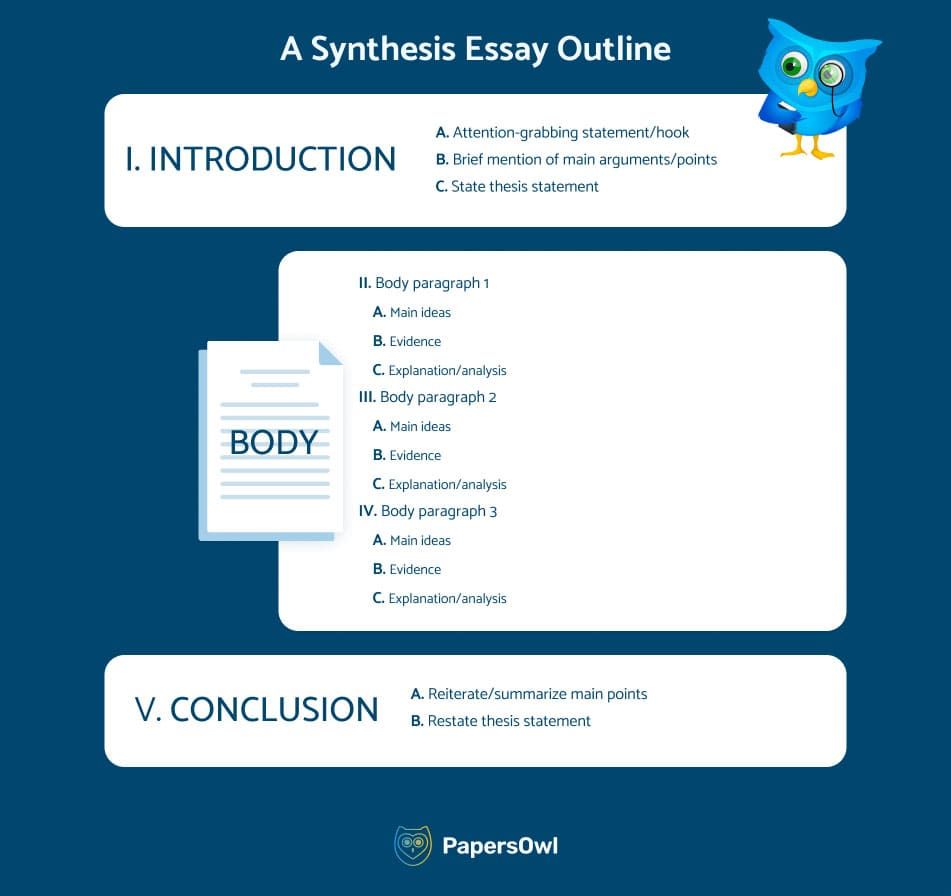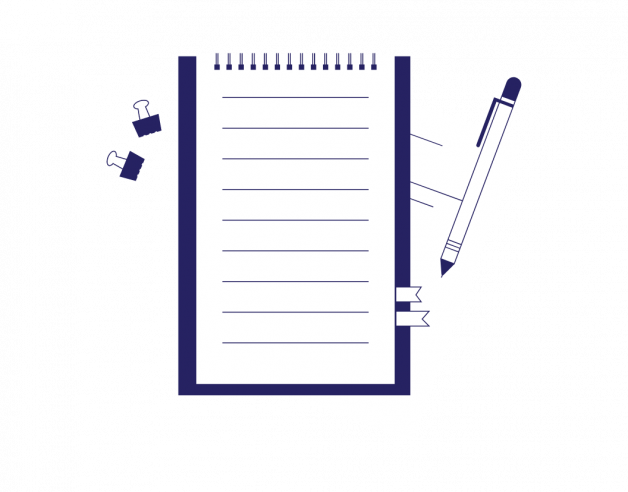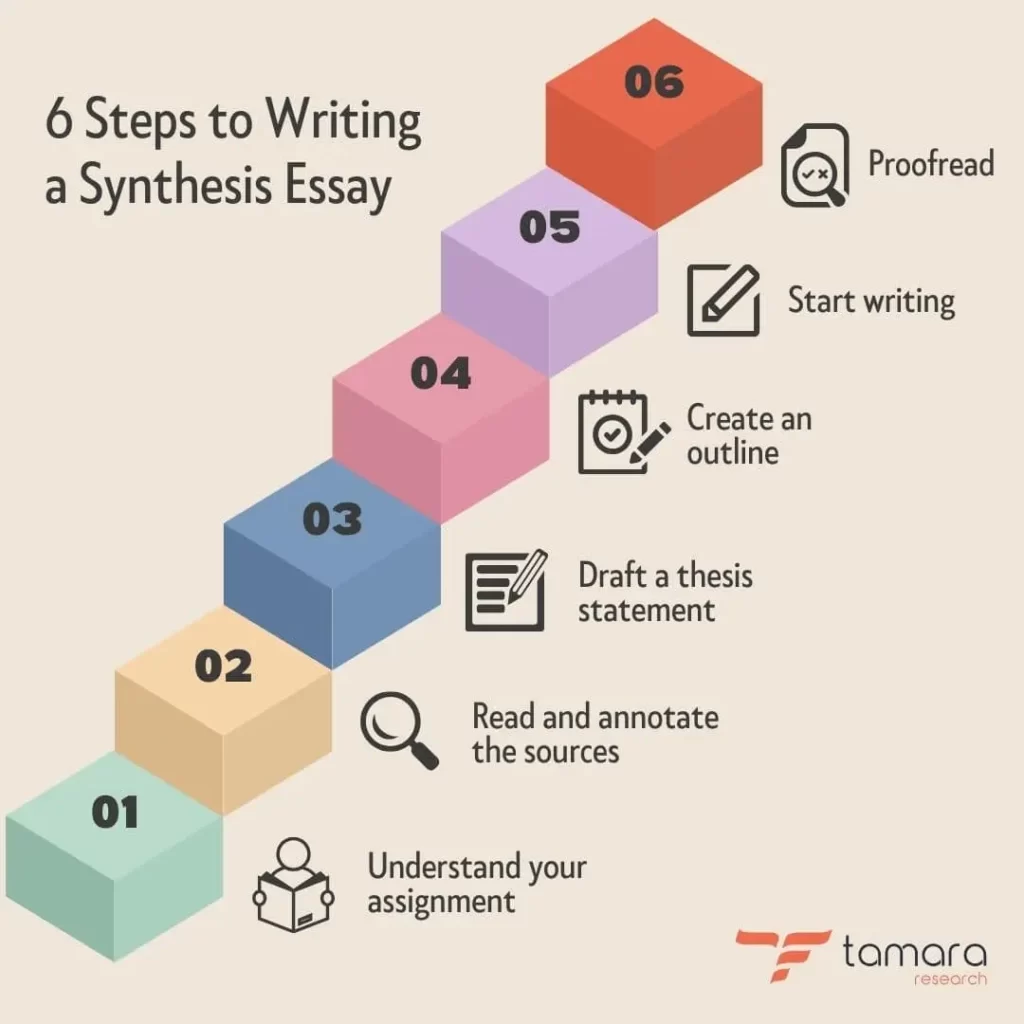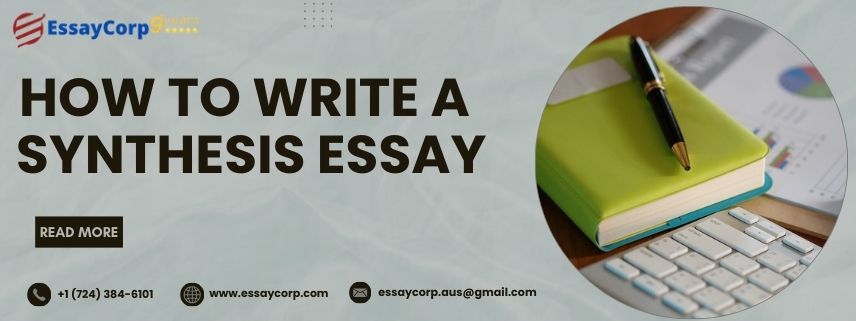- [email protected]
- (650) 338-8226

Cupertino, CA

- Our Philosophy
- Our Results
- News, Media, and Press
- Common Application
- College Application Essay Editing
- Extracurricular Planning
- Academic Guidance
- Summer Programs
- Interview Preparation
Middle School
- Pre-High School Consultation
- Boarding School Admissions
College Admissions
- Academic and Extracurricular Profile Evaluation
- Senior Editor College Application Program
- Summer Program Applications
- Private Consulting Program
- Transfer Admissions
- UC Transfer Admissions
- Ivy League Transfer Admissions
Graduate Admissions
- Graduate School Admissions
- MBA Admissions
Private Tutoring
- SAT/ACT Tutoring
- AP Exam Tutoring
- Olympiad Training
Academic Programs
- Passion Project Program
- Science Research Program
- Humanities Competitions
- Ad Hoc Consulting
- Athletic Recruitment
- National Universities Rankings
- Liberal Arts Colleges Rankings
- Public Schools Rankings
Acceptance Rates
- University Acceptance Rates
- Transfer Acceptance Rates
- Supplemental Essays
- College Admissions Data
- Chances Calculator
- GPA Calculator
National Universities
- College Acceptance Rates
- College Overall Acceptance Rates
- College Regular Acceptance Rates
- College Early Acceptance Rates
- Ivy League Acceptance Rates
- Ivy League Overall Acceptance Rates
- Ivy League Regular Acceptance Rates
- Ivy League Early Acceptance Rates
Public Schools
- Public Schools Acceptance Rates
- Public Schools Overall Acceptance Rates
- Public Schools Regular Acceptance Rates
- Public Schools Early Acceptance Rates
Liberal Arts
- Liberal Arts Colleges Acceptance Rates
- Liberal Arts Colleges Overall Acceptance Rates
- Liberal Arts Colleges Regular Acceptance Rates
- Liberal Arts Colleges Early Acceptance Rates

How to Write a Synthesis Essay: Tips + Examples

By Eric Eng

A 2019 study found that over 70% of students struggle with academic writing, and synthesis essays are no exception. If you’re having trouble thinking of how to write a synthesis essay, think of it like making a pizza. You can have all the ingredients separately, but combining them creates something that’s even more awesome. A synthesis essay blends different sources to build a strong, unified argument or analysis. When done right, the result is cohesive and compelling.
In this blog, you’ll discover a step-by-step guide on how to write a synthesis essay, complete with tips and tricks to make the process easier. By the end, you’ll have the skills and confidence to tackle any synthesis essay confidently.
What Is a Synthesis Essay?
How to start a synthesis essay, how to write a synthesis paragraph, synthesis essay example, tips for writing a killer synthesis essay, frequently asked questions.

A synthesis essay is a type of writing where you take information from different sources and use it to support a central idea or argument. The goal is to combine facts, data, and viewpoints from these sources to show how they connect and build a stronger case for your own perspective. Instead of just summarizing what each source says, you analyze and pull everything together to form a clear, unified argument.
A successful synthesis essay will:
- Present a clear thesis that states your main argument or claim.
- Use information from multiple sources to support that argument.
- Show how these sources connect and relate to one another.

The biggest challenge for many students? Getting started. Once you know how to begin, the rest falls into place! Here’s a foolproof guide to nailing your intro.
1. Begin with a hook.
Your first sentence should grab attention. Think of something surprising, thought-provoking, or intriguing. This could be an interesting statistic, a bold claim, or even a rhetorical question. The idea is to pique the reader’s interest so they feel compelled to keep reading.
Example of a hook:
“ Did you know that 60% of today’s workforce prefers remote work over traditional office settings? That statistic may surprise you, but it reflects a major shift in how we think about work in the 21st century. “
2. Introduce the topic.
After your hook, you’ll want to ease into your topic. Give a bit of background information so your readers understand what the essay is going to be about. This is where you can introduce the main sources or themes you’ll be synthesizing.
3. End with a thesis.
Your thesis statement is the backbone of your essay. It should clearly tell the reader what your essay will argue. Think of it as the roadmap for your paper. Without it, your reader will be lost!
Example of a thesis:
“ While both traditional office work and remote work offer their own advantages, a hybrid model that blends both approaches is the most effective in promoting productivity and work-life balance. “
The hook grabs attention, the topic is introduced, and the thesis makes it clear what the essay will argue. Having a hook is important because it grabs the reader’s attention right away, making them want to keep reading. It sets the tone for your essay and gives the reader a reason to stay engaged.

The body of your essay is where you’ll really dig into your argument, using your sources to back up your points. Each paragraph should be well-structured so your essay doesn’t feel like a random collection of facts. Here’s a simple breakdown for writing a strong synthesis paragraph:
1. Start with a topic sentence.
This sentence should introduce the main point of the paragraph. It acts as a mini-thesis for that section.
2. Provide evidence from your sources.
Now, it’s time to bring in the sources you’ve found during your research. Ideally, you’ll want to use at least two sources per paragraph to show how different authors or experts agree (or disagree) on your point. Always remember to properly cite your sources!
3. Analyze and synthesize.
The key to a synthesis essay is not just throwing in a bunch of quotes but showing your readers how these sources connect. How does one source support the other? Are they offering different perspectives that, when combined, give a fuller picture of your argument?
4. Conclude the paragraph.
Wrap up the paragraph by linking back to your main thesis. This reinforces how this particular point supports your overall argument.
Now that you’ve got the basics of a synthesis essay down, jump into some examples to see them in action. Use these examples to help you nail a strong introduction and a killer conclusion, so you can ace your AP Lit class!
The benefits of joining a sorority in college
Topic sentence
“ One of the key benefits of joining a sorority is the strong sense of community and support it provides. “
Evidence from sources
“ A 2021 study by the National Association of Student Affairs Professionals found that students involved in Greek life , particularly sororities, reported higher levels of social support and belonging compared to their non-Greek peers (Johnson, 2021). Additionally, research from the University of Southern California showed that sorority members were 25% more likely to graduate on time, citing strong mentorship and academic support within the organization (Davis, 2020). “
“ These studies demonstrate that sororities offer a built-in network of friends and mentors, which helps members navigate the challenges of college life. From emotional support to academic guidance, the sense of community within sororities fosters personal growth and success. “
Concluding sentence
“ Thus, joining a sorority can provide valuable resources and a strong support system, contributing to both academic achievement and personal development. “
Why the example works
This is a good example since it follows the structure of a strong paragraph while effectively supporting the argument. The topic sentence about how sororities provide a strong sense of community and support introduces the main idea and sets up the discussion.
Evidence from sources strengthens the claim by citing credible research, such as the study from the National Association of Student Affairs Professionals and the University of Southern California. These studies provide concrete data demonstrating how sorority members benefit academically and socially.
The analysis explains the connection between the evidence and the main argument and shows how the support system in sororities can help members succeed. The concluding sentence ties everything together and reinforces that joining a sorority can benefit academic and personal growth. This example flows well, uses reliable sources, and clearly supports the thesis.

Now that we’ve walked through the process, here are some tips to make sure your essay stands out :
1. Choose credible sources.
When you’re writing a synthesis essay, choosing reliable sources is crucial. Stick to reputable sources like academic articles, peer-reviewed studies, and books written by experts in the field.
Suppose you’re writing about the effects of climate change, in that case, an article from a scientific journal or a report from an organization like the EPA will carry much more weight than a random blog post or a website without proper credentials.
Think of your sources as the foundation of your essay. If they’re shaky or unverified, your argument won’t be as convincing. Avoid websites that don’t provide the author’s credentials or have questionable information. Trustworthy sources help build your credibility and make sure your essay is based on facts, not opinions or unreliable data.
If you’re looking for credible sources for your research, there are a bunch of great online tools you can use. Google Scholar is a reliable source of tons of academic articles, and JSTOR gives you access to journals and primary sources. For access to free, peer-reviewed articles in all sorts of fields, check out the Directory of Open Access Journals (DOAJ).
2. Stay organized.
Working with multiple sources can get messy fast, especially when you’re juggling facts, quotes, and different perspectives. A great way to stay on top of things is to organize your sources by the sections of your essay.
For example, if you’re writing a paragraph about the benefits of online learning, make a note of which studies or articles you’ll pull from to support that point. You could use a digital tool like Google Docs or Evernote, or even just a notebook, to track your sources.
Jot down key facts and which source they came from so you’re not scrambling later. Staying organized helps ensure you don’t accidentally misattribute information or lose track of key data, making your writing process smoother and your essay more cohesive.
3. Be clear and concise.
It’s easy to get excited about all the interesting facts you find during your research, but remember that less is more. Every piece of information you include should directly support your thesis.
Let’s say you’re writing about the impact of technology on education. Instead of throwing in every statistic you come across, focus on the ones that strengthen your argument, like a study showing how virtual classrooms increase student engagement.
Resist the urge to overload your readers with too much information or veer off-topic. Keep it simple, and only include facts that are directly relevant to the point you’re trying to make. Your readers will thank you for staying on track, and your essay will be much more focused and persuasive.
4. Don’t forget to synthesize.
The key to a great synthesis essay is smoothly blending your sources into one cohesive argument. You don’t want your essay to feel like a random list of summaries or unrelated ideas. Instead, treat it like your sources are having a conversation.
Think of it this way, if one source talks about how social media is great for networking and another points out its negative impact on mental health, don’t just list them separately. Show how they’re connected.
You can do this by discussing how social media has its perks while also presenting the downsides that people need to balance. This approach helps your essay feel more connected and shows that you really understand the different perspectives. In a synthesis essay, it’s all about making those connections, not just throwing out facts.
1. How do I choose sources for a synthesis essay?
Select sources that are credible and relevant to your topic. Look for a mix of perspectives, such as scholarly articles, books, and reliable websites. The key is to find sources that provide valuable information to support your argument.
2. What is the best way to structure a synthesis essay?
A synthesis essay typically follows a standard structure. It has an introduction with a thesis statement, body paragraphs that integrate and analyze your sources, and a conclusion that summarizes your main points and restates the thesis.
3. How do I write a strong thesis statement for a synthesis essay?
Your thesis should clearly present the main argument or point of view you’ve formed after analyzing your sources. It should reflect the central theme of your essay and guide the reader on what to expect from your synthesis.
4. How can I avoid summarizing sources instead of synthesizing them?
Instead of just restating what each source says, focus on finding connections between them. Compare and contrast the viewpoints, and discuss how they complement or contradict each other to build your own argument.
- A synthesis essay combines information from different sources to support a central argument or analysis. It’s not about summarizing sources but about connecting them to form a unified point of view.
- Start with a compelling hook to grab attention, introduce your topic clearly, and end with a solid thesis statement that outlines your main argument.
- Each paragraph should have a clear topic sentence, use evidence from multiple sources, and synthesize those sources by showing how they relate to and support your argument.
- Use reputable, relevant sources, and keep your essay well-organized and concise, always linking back to your thesis. The key is synthesizing, not just summarizing.
- Need help with writing your synthesis essay? You can seek the help of a private consultant to give you feedback on your work.
Want to assess your chances of admission? Take our FREE chances calculator today!

Why College Admissions Isn’t Perfect

US News Rankings

The Personal Statement: The Holy Grail of College Admissions

The Modern Day 4.0 and 1600 SAT Score Student Is No Longer Impressive

The Competitive Nature of College Admissions for Asian Americans

The College Application

Our Comprehensive Approach

Ivy League Schools

How Early Should You Prepare for College?

Featured in US News & World Report Best Colleges Publication

Congratulations to AdmissionSight Students and their Acceptances!

College Rejection

College Rankings

College Consultants Could Make A Difference

College Admissions Scandal and Higher Education

Columbia Legacy Acceptance Rate

The Duke Common Data Set

What Is The Easiest Engineering Degree?
How to get into dartmouth: admission requirements and tips.

27 Scholarships for Black Women

6 Reasons Why the University of Chicago (UChicago) Is a Good School

Internship interview questions: Insights + Tips

Law Schools That Don’t Require the LSAT

Is It Too Late to Apply for College: A Complete Guide

Is This Really the “Worst” Ivy League School?

Can You Take AP Classes over the Summer?

How Hard Is It To Become A Lawyer?

A Complete Guide to Cornell University Campus Life

7 Reasons Why College Should Be Free

How to Tackle Hard Math Problems: Tips + Examples

Can I Apply For Private Student Loan Forgiveness? Full Guide + Tips

USC Supplemental Essays 2024-2025: Prompts + Tips
Leave a comment cancel reply.
Your email address will not be published. Required fields are marked *
Save my name, email, and website in this browser for the next time I comment.
Recent Articles

What Is The Easiest Engineering...
How to get into dartmouth:....

6 Reasons Why the University...

Internship interview questions: Insights +...

Law Schools That Don’t Require...

Is It Too Late to...

Is This Really the “Worst”...

Can You Take AP Classes...

How Hard Is It To...
Sign up now to receive insights on how to navigate the college admissions process..

Admissions Counseling
- Academic & Extracurricular Profile Evaluation
Copyright © AdmissionSight 2024
Privacy Policy - Terms and Conditions
Writing Synthesis Essay: Make it Easy with Our Comprehensive Guide
Table of contents
- 1 Purpose and Objectives of a Synthesis Essay
- 2.1 Explanatory Synthesis Essay
- 2.2 Argument Synthesis Essay
- 2.3 Review Synthesis Essay
- 3 Common Topics Encountered in Synthesis Essays
- 4.1 Conduct Thorough Research
- 4.2 Look from Diverse Perspectives
- 4.3.1 Chronological Method
- 4.3.2 Thematic Method
- 4.3.3 Point-by-point Method
- 5 Make a Synthesis Essay Outline to Structure Content
- 6.1 Critically Analyze Sources and Identify Their Relevance to the Thesis Statement
- 7.1 Support Your Arguments
- 7.2 Address Counterarguments
- 8.1 Bibliography
- 9 Proofread and Edit Your Essay
- 10 Bottom line
- 11.1 How long should a synthesis essay be?
- 11.2 How many paragraphs are in a synthesis essay?
- 11.3 Is a synthesis essay argumentative?
- 11.4 Does a synthesis essay have a counterargument?
Being a student is a challenging task, as you have to handle different types of essays, particularly synthesis essays. What is a synthesis essay? Such creative writing helps students to develop research skills, conduct a thorough analysis and improve their writing skills. Also, it boosts their abilities to deliver original ideas, arguments, and clear explanations of particular viewpoints. Students might often receive such writing tasks for the AP English language exam. We know how challenging it can be for them to write a synthesis essay.
With this in mind, we uncover the key points of synthesis writing in this review, which are the following:
- We’ll define the main traits of this essay type
- What are the different types?
- We collect the best advice on how to write a synthesis essay.
- and prepared the list of synthesis essay topic examples.
If you find it difficult to start your synthesis essay, you can get help from our PapersOwl service. The best experts in academic writing await you to bring up a good synthesis essay with a high assessment grade.
Purpose and Objectives of a Synthesis Essay
First and foremost, it is vital to understand the definition of a synthesis essay. It is a type of essay in which you should provide justified arguments, ideas, or statements based on a particular point of view. Composing a synthesis essay requires a lot of time and effort. You must analyze many credible sources to collect specific data and create a unique research paper. Synthesizing sources has to do with analyzing them, but not vice versa. You should provide an in-depth analysis of each source and then combine the similarities or differences between them into one coherent and well-structured essay. The next section uncovers this matter.
Key Features and Components
A synthesis essay counts a few types depending on the objectives to reveal. But essential synthesis essay components are the same and consist of three main parts: introduction, main body, and conclusion. The introductory paragraph should be catchy and highlight the main points of your paperwork due to a good thesis statement. The main body should include at least three paragraphs separated by exposing different thoughts, arguments, or explanations. The conclusion should also leave a spot for meditating for your reader on what you have disclosed in it. Further, we explain three types of synthesis papers and their specifications.
Explanatory Synthesis Essay
This type of synthesis essay involves disclosing various facts, views, or points. That’s why it is required to explore many reliable sources to get as much relevant information about a topic under investigation as possible. Thus, a writer can explain the emergence of certain points of view and facts. This writing task helps high school and college students do deep research, compare facts and perspectives, and deliver a detailed synthesis analysis essay. It is essential to complement each statement with specific evidence and statistical data. This will underline the relevance of the information introduced in an essay and make it meaningful and reasonable.
Argument Synthesis Essay
When writing argumentative essays , one must choose a specific topic and present arguments supporting or opposing viewpoints. This writing assignment incorporates two objectives: gather and systemize information revealing the main topic and argue them from your perspective. It requires creativity and deep knowledge of the field and aspect you must put on paper. Writing an argumentative essay is not an easy task. You should stick to a particular perspective and move on to exposing it. It is crucial to provide enough facts and proof to convince your reader that your viewpoint is noteworthy.
Review Synthesis Essay
Review synthesis essays are often parts of larger projects and are used to make reviews of particular aspects, for example, in medicine and social sciences. When composing this type of essay, you should provide full information about the examined object, state, or problem. The literature review should contain as many key points and peculiarities as possible. Thus, it will draw a complete picture of an aspect that will bring clarification and worth to your topic. To hook your reader from the very onset, you should articulate a good synthesis thesis statement in your introductory paragraph.
Common Topics Encountered in Synthesis Essays
To help you with a topic choice for your AP Lang synthesis essay, we listed some from different fields and sciences. The first of three essays is about AI technology. We tried to single out the most relevant example prompt topics for you to get started with. Check them out below.
- Artificial intelligence: Big threat or valuable tool for modern society
- Cryptomarket: The ups and downs
- Technology in the traditional classroom: A threat or benefit?
- Explain whether testing new drugs on animals is ethically permissible
- Should alternative medications be covered by insurance?
- Disturbance regimes under Global Warming
- Explaining how the American way of life contributes to global warming
- Distance education: Its effect on college students on campus
- Can modern people keep complete control over their life?
- Nuclear or solar power: Benefits and Demerits
- Explain the impact of gas fuel plants
- Remote work impact on people: How is their physical activity?
- Explain the role of sport in the American education system
- Is it possible to buy happiness for money?
- The basic survival skills everyone should know
Tips on How to Write Synthesis Essay
It is easier said than done when it comes to writing a synthesis essay. That is true, and for this reason, we outlined the list of valuable synthesis essay tips we consider the most essential to focus on. They are helpful for both writing an AP lang synthesis essay and a term assessment. Check them out.
Conduct Thorough Research
A good paper is regarded as meaningful when it is based on deep and all-encompassing research. Don’t neglect to provide a thorough exploration of your topic. The more information you find, the more valuable and reasonable your essay will be. But make sure you use credible sources to summarize and synthesize the data. Once you have a viewpoint to reveal, look for sources that support it or oppose it so that you can use them to substantiate your perspective.
Look from Diverse Perspectives
When willing to express one particular point or argument, consider other perspectives that might contradict your ideas. Why is it important? You should be aware of all the main arguments or acceptances occurring around your topic. It is essential to study different points of view that emerged on the basis of your theme or aspect under study. This could help you disclose another side or significance of your essay topic and change the focus of the main content you want to unleash. Doing this can reveal a new perspective, idea, or aspect of your synthesis essay’s research.
Choose an Organizational Method
Although an essay has a standard structure, your content should be well-composed and introduced coherently. All data should be outlined so a reader will enjoy the smooth turn from one statement to another. Depending on the field and aspect you are preparing a synthesis essay about, there are three methods to organize the content in your paper. They are the following:
Chronological Method
If you include dates or other significant events in your review or argumentative essay, it makes sense to present them in chronological order. Every fact should be justified per its development. So later, you can introduce your perspective or statement that will explain the impact of prior events. For example, when revealing a particular historical period in the US, you should first mention all important events chronologically. So then, you can argue your idea about the changes they brought to the country from a political or international perspective.
Thematic Method
A synthesis paper can be written for any field of science to represent a shorter version of facts, viewpoints, research results, etc. That’s why students can come across some topics that require uncovering a few themes in one essay. It is where a thematic method of content organization takes place. You should determine what notions or terms should be mentioned and revealed in your paper. Then, think of what term might explain or continue a key message of another term. Once you find out this detail, you should present each term one after another, keeping coherence in the information flow.
Point-by-point Method
As synthesis papers deal with different ideas, arguments, viewpoints, etc., comparison as a research method has a place. You can operate with many hypotheses, approaches, ideas, and arguments, so comparing them and finding their similarities and differences makes sense. This content organization method involves explaining one point of the synthesis statement, and then another point to compare further.
Crafting a successful synthesis essay requires a well-structured outline, which can be challenging to develop without assistance. Luckily, many academic essay writing services, such as PapersOwl.com, offer support in this area. To help you get started, here is an outline you can utilize to write a compelling synthesis essay that will leave a lasting impression on your professor.
Make a Synthesis Essay Outline to Structure Content

Earlier, we emphasized the importance of orchestrating your main content under study. This section covers the crucial thing in writing a synthesis essay: an outline. The outline is a great synthesis essay template for structuring your entire paper. We recommend you always stick to it once you define your essay’s topic and objective. Thanks to it you will be able to keep your focus on the angle of your work.
If you want to deepen your knowledge, we have prepared steps on how to write a synthesis essay outline. The outline of your essay must include three main components, but it can vary, and mostly the main difference is in a short and cited presentation of the thoughts you want to reveal in your essay. Below, we introduce a brief outline structure:
- Introductory part
The beginning of your essay mustn’t be too long. It is enough to disclose your objective, the main topic, and a strong thesis statement in one paragraph. It doesn’t make sense to keep a reader’s attention for long in the introduction, explaining what you are going to describe or argue in detail. Present it shortly and precisely.
- Body paragraph
In this part of the essay, you should introduce all you have researched, analyzed, and systematized. Likewise, you should expose your material in a minimum of three paragraphs. Each part has an appropriate synthesis-paragraph structure. In the outline, we recommend you craft a bullet list of three here and note shortly what points you want to describe in each paragraph.
This is the summarizing part of the essay, where you conclude all the information introduced in your synthesis essay. It is essential to repeat the thesis statements here. It should also be concise.
Write an Engaging Introduction
A good synthesis essay should get a reader engaged straight from its introduction. An introductory part should be composed in an interesting way to keep reading your essay. Here is where a reader finds out about the background of the topic and what main problems or ideas will be discussed. Such information should be catchy, and it is essential to make the first opening sentence sharper.
Another important thing in the introduction is crafting a hooky synthesis essay thesis statement. The thesis will be like a compass to the main points of your essay. Try to make the topic sentence specific and intriguing by matching your essay objectives.
Introduction synthesis essay example: When it comes to running a successful business, there’s no doubt that having the right people on board is crucial. After all, a company is simply a group of individuals working together towards a common goal. However, not enough emphasis is placed on what the “right” people actually look like. That’s why I wanted to bring attention to an often overlooked but incredibly important attribute: resistance. In this article, I’ll explain what resistance is, why it matters, and how you can identify it in potential team members.
Critically Analyze Sources and Identify Their Relevance to the Thesis Statement
A thesis presents a key message of your paper. This is what both reveals the focus of an essay and captures a reader’s attention. That’s why it requires exploring many sources carefully and critically analyzing them to identify their relevance. So then, you can formulate a strong thesis statement that will combine the key points of the synthesis essay. The more valuable data you find and analyze, the more precious your thesis.

The Main Body
There are three parts to your essay, each using a different type of evidence. The first two sections should contain evidence that supports your thesis. This can be in the form of direct quotes from your sources , statistics, and/or other research that supports your claim. The third section should contain evidence against your thesis – or what some might call “counterpoints” or “arguments against”.
Building on this structure, it’s imperative to recognize that the very foundation of your thesis relies on the robustness of these supporting arguments. Let’s look closer.
Support Your Arguments
Every thought, idea, assumption, and definition from your thesis statement must be justified by supporting arguments. No one will get involved in a piece that tells about everything and nothing simultaneously when there is no evidence and proof of mentioned facts. This point is vital as your perspective must have a background, and you should explain the reasons you provide a particular argument or viewpoint.
Extensive research and analysis of credible sources allow students to come up with exciting and valuable solutions, ideas, and directions. That’s why the time spent on deep study will always pay you back. It is a very significant component in writing argumentative synthesis essays. So, make sure you find supporting arguments for the idea or perspective you want to convey to a reader. This will increase the persuasiveness and worthiness of your message in the essay.
Address Counterarguments
Sometimes, it is difficult to persuade someone when many counterarguments make your point of view unworthy. The same might happen when you decide to start a synthesis essay and prove your opposite perspective. This task is challenging and requires thorough research of counterarguments. Only by having analyzed a massive set of information, one can provide reasonable comparisons and meaningful explanations to let a reader take their perspectives into account. Here are a few helpful tips on how to maintain a persuasive stance while considering opposing viewpoints:
- Study all counterarguments that might be according to your viewpoint;
- Learn the background of the counterarguments;
- Find out what consequences they can lead to (if they are negative);
- Weigh the influence of opposing arguments and find their weak points;
- Justify your viewpoints clearly and precisely with supporting evidence;
- Provide comparative analysis to underline the significance of your perspective;
- Never ignore the counterarguments in your informative synthesis essay paper.
Craft a Strong Conclusion
The conclusion is the last but not least component of a synthesis essay structure. The train of thoughts and ideas kept during the entire paper shouldn’t be interrupted instantly. It must have an excellent finalizing part where you sum up all mentioned in your essay and leave a good touch for your reader.
To craft a strong conclusion, you should present an overview of your research and note the main points of your argument or perspective. But remember, the conclusion doesn’t have to be too long and saturated. It should be brief, concise, and precise. Remember to remind your reader of your thesis statement and emphasize the relevance and significance of your essay’s topic.
Conclusion synthesis essay example: Through our research, we have identified effective strategies for dealing with repetitive motions in individuals with Autism Spectrum Disorder. It is clear that multiple behavior modification therapies are important for improving this behavior. Further exploration into behavior modification techniques could lead to finding more therapy techniques that can greatly improve the lives of those with repetitive motion behaviors. We believe that this research can make a significant impact in helping individuals with Autism Spectrum Disorder lead more fulfilling lives.
Bibliography
A bibliography is a list of books, journals, and other sources of information used in the essay. The bibliography should be alphabetically arranged by the author’s last name. All sources should be listed separately on a separate page following the main body of text or at the end of your paper.
Your research sources should be properly credited at the end of the essay, whether you’re using MLA, APA, or another format . The most common form for citing an author’s work is called “parenthetical citation” or “in-text citation.” In parenthetical citations, you include the title of the work (italicized), page numbers if applicable, year published (if applicable), medium (e.g., book), and publisher’s name (if not self-published).
Proofread and Edit Your Essay
Even if you think your work is impeccable, it needs to be proofread and edited. While you are concentrating on the writing process, you might skip some other nuances. This can be punctuation, typos, grammatical errors, or incorrect sentence order. For this reason, a synthesis essay must go through thorough proofreading to detect any kind of errors. Apart from this, you can split one body paragraph into two, for example, if you find different points discussed in it. You should also format it using a particular format style to handle a well-structured, edited, and formatted essay.
Bottom line
Wrapping up, we encourage you to follow our tips on how to write a good synthesis essay. Although any type of writing isn’t easy work, you can do it well with the help of good supporting sources available on our website. If you are short on time and understand that you can’t cope with this task, you can find an expert who writes essays for you to meet your deadlines. But if you decide to make it up alone, make sure to craft an outline and follow all the insightful tips mentioned in this article.
How long should a synthesis essay be?
How many paragraphs are in a synthesis essay, is a synthesis essay argumentative, does a synthesis essay have a counterargument, readers also enjoyed.

WHY WAIT? PLACE AN ORDER RIGHT NOW!
Just fill out the form, press the button, and have no worries!
We use cookies to give you the best experience possible. By continuing we’ll assume you board with our cookie policy.
- Link to facebook
- Link to linkedin
- Link to twitter
- Link to youtube
- Writing Tips
How to Write a Synthesis Essay

4-minute read
- 31st May 2023
Are you writing a synthesis essay? This is a paper that combines information from a variety of sources to form a new idea. Essentially, you’re synthesizing existing concepts and arguments to create something original.
As a student, you’ll probably have to write a synthesis essay at some point. Read on for our step-by-step guide on how to write one effectively.
Step 1. Define Your Idea or Argument
If you haven’t done so already, decide on a topic to write about. Read up about it using a variety of credible sources and make detailed notes while you research. Make sure you keep track of the sources you decide to pull information from so that you can cite them properly later.
Make a list of key points from your research. Once you have a good selection of material to work with, start developing your own idea or argument. This will be the focus of your essay.
Step 2. Create an Outline
Synthesis essays generally follow this format: an introduction, a handful of main body paragraphs, and a conclusion. It’s a good idea to come up with an essay plan before you start writing so that you can keep things organized while you work.
The outline is mainly helpful for deciding what to include in your body paragraphs. Decide what supporting points (and counterarguments ) from your research you want to include, and which order you want to discuss them in. You should have enough information to flesh out one paragraph for each point.
Step 3. Write Your Introduction
In your introduction, you should open with something that hooks the reader and captures their attention. Then, state your argument or idea (i.e., your thesis statement) and briefly summarize the material you’ll be including in your essay. You should also include any relevant background information here.
Step 4. Write the Body Paragraphs
Using your outline, discuss each point from your source material in more depth, devoting a body paragraph to each. Explain the information from the outside source, including appropriate citations, and discuss how it connects with your idea.
It’s a good idea to mostly focus on points that support your argument, but you should also include a paragraph with a counterargument or two. This means discussing a perspective that doesn’t necessarily align with your idea, and then explaining why your argument still works.
Step 5. Tie It All Together With a Conclusion
The conclusion should leave the reader feeling convinced of your idea. Restate your point clearly and summarize the main points you’ve discussed. You could also offer any concluding reflections on the topic.
Different Types of Synthesis Essays
While you can follow our steps for any type of synthesis essay, yours will probably fall under one of two categories: explanatory or argumentative.
Find this useful?
Subscribe to our newsletter and get writing tips from our editors straight to your inbox.
Argumentative essays are as they sound – they present an argument. With an argumentative essay, you’ll take a more definitive stance on something and use your supporting material to persuade the reader.
Explanatory essays don’t necessarily take a side one way or the other. Rather, they focus on developing and explaining a concept thoroughly. Knowing which type of essay you’re writing will help you to gather more effective source material for your purpose.
Cite Your Sources
Since synthesis essays are particularly dependent on outside material, it’s especially important that you cite your sources correctly. Familiarize yourself with your referencing system before you start researching so you know what information you need to keep track of, and include appropriate citations whenever you use someone else’s work.
At the end of the essay, you’ll need to compile your sources into a reference list following the requirements of your style guide.
Summary: Writing a Synthesis Essay
Hopefully, this post has helped you to feel more confident in writing a synthesis essay. Choose a topic first, do your research, keep track of your sources, and develop an argument or idea. From there, you can organize your thoughts into an outline and get to writing!
Once you’ve created a first draft, make sure you send it our way! We’ll check it for errors in grammar, spelling, referencing, and more. Try it out for free today.
Frequently Asked Questions
What is a synthesis essay.
A synthesis essay gathers ideas and viewpoints from several different sources and ties them together to form a new concept.
How long is a synthesis essay?
Synthesis essays usually follow the five-paragraph format, with an introduction, three main body paragraphs discussing different points, and a conclusion.
Share this article:
Post A New Comment
Got content that needs a quick turnaround? Let us polish your work. Explore our editorial business services.
5-minute read
Free Email Newsletter Template
Promoting a brand means sharing valuable insights to connect more deeply with your audience, and...
6-minute read
How to Write a Nonprofit Grant Proposal
If you’re seeking funding to support your charitable endeavors as a nonprofit organization, you’ll need...
9-minute read
How to Use Infographics to Boost Your Presentation
Is your content getting noticed? Capturing and maintaining an audience’s attention is a challenge when...
8-minute read
Why Interactive PDFs Are Better for Engagement
Are you looking to enhance engagement and captivate your audience through your professional documents? Interactive...
7-minute read
Seven Key Strategies for Voice Search Optimization
Voice search optimization is rapidly shaping the digital landscape, requiring content professionals to adapt their...
Five Creative Ways to Showcase Your Digital Portfolio
Are you a creative freelancer looking to make a lasting impression on potential clients or...

Make sure your writing is the best it can be with our expert English proofreading and editing.
How to write a synthesis essay
- January 1, 2024
Synthesis essay is a challenging form of academic writing in which you combine multiple sources into a coherent and persuasive argument.
When writing one, better follow a series of basic steps that we will explain in the next paragraphs to write a great essay.
So let’s quickly start learning how to write a great synthesis essay.
Quick summary
- Take the time to understand the essay prompt to grasp the requirements of the assignment.
- Engage in extensive research and gather information from a variety of reputable sources.
- Develop a strong thesis statement and outline.
- Start writing your introduction, body paragraphs, and conclusion. Make sure to include smooth transitions between these paragraphs.
- Use the proper citation or formatting (APA, MLA, etc.) and make sure you proofread your essay.
Synthesis essay definition
What is a synthesis essay?
Your primary goal with a synthesis essay is to provide a unique perspective, supported by evidence. For example, suppose you have two distinct essays or research papers on “excessive social media usage” and “the effects of social media on psychology.”
In your synthesis essay, you can blend these two sources into a cohesive argument like “the psychological impacts of excessive social media usage on individuals.”
Synthesis essay introduction
The introduction is the opening paragraph of a synthesis essay, where you present the topic and provide background information. Like a usual introduction , it should not be more than 10% of your essay.
- It should include a clear and concise thesis statement that states the main argument or viewpoint of the essay.
- It should reflect the synthesis of information from multiple sources.
Now let’s have a look at the introduction example below.
Synthesis essay introduction example
Introduction, body paragraphs.
The body paragraphs form the core of the synthesis essay. Each paragraph should focus on a specific aspect of the argument and present evidence and analysis from the sources to support the thesis statement. When writing body paragraphs:
- Use topic sentences to introduce the main idea of each paragraph
- Make use of transition words to create a smooth flow between paragraphs.
Let’s have a look at a body paragraph example.
Synthesis essay body paragraph example
Synthesis essay conclusion.
The conclusion is the final paragraph of your essay. A compelling conclusion leaves a lasting impact on the reader, reinforcing the essay’s main message.
- Restate the thesis statement slightly different.
- Summarize the main points discussed in the body paragraphs and emphasize the significance of the overall synthesis
Let’s have a look at the components of a conclusion paragraph below.
Synthesis essay conclusion example
Now that we’ve seen a short example of synthesis essay, let’s continue with the steps to write a great one.
Steps on writing a synthesis essay
In this section, we’ll guide you through the writing process with each steps explained in detail and examples.

Step 1 - Understand your assignment
- Depending on your field of study, you may need to adhere to standard formatting styles such as MLA , APA , or Chicago.
- Consider that formatting expectations may be different. Pay attention to certain guidelines provided by your instructor.
Example of a synthesis essay assignment
- Investigate the impact of artificial intelligence on the job market and society.
- Synthesize at least three different sources, including academic articles, news reports, and opinion pieces, to discuss the benefits and challenges posed by AI's integration into various industries.
- Consider the ethical implications, potential job displacement, and the role of policymakers in addressing these changes.
- Use correct APA 7 citation format and make sure the essay is at least 1000 words.
So you see an example above, take some time to carefully review the prompt, and give particular attention to the formatting requirements.
Step 2 - Read and annotate the sources
After finding relevant sources, read each one critically by highlighting key ideas and arguments. Annotating sources with concise summaries and evaluative comments helps in later stages of the essay writing process.
- Academic Journals and Research Papers: These are scholarly articles written by experts in a particular field.
- Books: Books: written by reputable authors and published by well-known publishers can be valuable sources of information.
- Government Publications: Reports, statistics, and studies published by government agencies can be reliable sources of data.
- Newspapers and Magazines: Articles from reputable newspapers and magazines can offer current and relevant information on various topics.
Step 3 - Draft a thesis statement
A well-crafted thesis statement forms the basis of any synthesis paper. It serves as the central argument, summarizing the synthesis of information gathered from selected sources.
A compelling thesis statement should be clear, concise, and debatable as it sets the tone for the entire paper.
Synthesis essay thesis statement example
....(introduction starts) ....(introduction continues) ....(introduction continues) The pursuit of space exploration has had profound effects on scientific advancement, global cooperation, and technological innovation, and has also raised ethical considerations. Thesis statement, which is usually the last sentence of your introduction
Step 4 - Create an outline
Creating an outline helps to organize the structure of the essay systematically. Using a formal approach with Roman numerals allows for an orderly arrangement of topics and supporting details.
With an outline , you can use subcategories to cite specific points and integrate references to various sources. Or simply structure your whole essay before you start.
Synthesis essay outline example
Outline sample
- Hook sentence
- Background information
- Thesis statement (Your argument & claim)
- Topic sentene
- Supporting detail 1
- Supporting detail 2
- Supporting evidence
- Topic sentence
- Counterpoint
- Restatement of thesis
- Summarize main points
- Closing sentence
Step 5 - Start writing your essay

With the outline, structure your essay into introduction , body paragraphs , and conclusion .
First draft won’t be perfect, no worries. Here you simply start writing your essay from intro to the conclusion.
Refer to our Introduction-Body-Conclusion examples above to complete this step!
Step 6 - Proofread your essay
- Make sure your grammar is accurate and clear. If possible, use tools like Grammarly .
- Read aloud your essay to notice details and mistakes.
- Let your essay sit for a couple days and make someone else read it. They may notice the mistakes you've overseen.
- Utilize an AI paraphrasing tool to check for any potential improvements in sentence structure and wording.
5-Paragraph Synthesis Essay Example
So now that you’ve seen all steps of writing a synthesis essay, it’s time to analyze a 5-paragraph example to have practical information. Simply see the essay example below and analyze how each sentence contributes to overall structure of essay.
The Rise of Telecommuting: A Blessing or a Curse?
And that’s all for today. If you want to keep learning more about academic writing, feel free to visit our extensive Learning Center or YouTube Channel .
Recently on Tamara Blog
How to write a discussion essay (with steps & examples), writing a great poetry essay (steps & examples), how to write a process essay (steps & examples), writing a common app essay (steps & examples), how to write a synthesis essay (steps & examples), how to write a horror story.
How to Write a Synthesis Essay: Your Guide From Start to Finish

Today, we're swamped with information, like reading 174 newspapers every day. It comes from all over—news, social media, science, and more. This flood might make you feel overwhelmed and lost in a sea of facts and opinions. But being able to make sense of it all is crucial.
In this guide, we'll show you steps for choosing the right topic and organizing your essay. Let's dive in and learn how to turn scattered facts into powerful essays that really stand out. If you're looking for assistance in writing a paper, you can consider the option to order essay from our expert writing service.
What Is a Synthesis Essay
Synthesis essay is an academic assignment where you take information from several sources and combine it to create a new, unified argument. Throughout the essay, you'll weave in evidence and insights from your sources to support your thesis, explaining how each source contributes to your overall argument.
Synthesis essays are commonly assigned in high school and undergraduate courses across various disciplines. They are a great way to develop critical thinking, research, and writing skills. They are particularly useful when a topic has multiple angles or ongoing debates, as they train you to analyze information objectively and form your own well-supported conclusions.
If you're struggling with this task, just ask us to ' write paper for me ,' and we'll handle your assignment for you.
How to Write a Synthesis Essay with Easy Steps
Writing a synthesis essay requires a methodical approach to blend information from different sources into a strong and persuasive argument. Here are steps to help you along the way.
1. Choose Your Topic:
- Make sure it's broad enough to allow for multiple perspectives but specific enough for focused research.
- Look for topics with ongoing debates or with room for your own interpretation.
2. Research and Gather Sources:
- Use credible sources like academic journals, books, and reputable news websites. Aim for a variety of perspectives to ensure a well-rounded analysis.
- Take notes while researching! Focus on key points, evidence, and the author's main arguments.
3. Develop Your Thesis Statement:
- This is the central argument of your essay, informed by your research.
- It should clearly state how the different sources will be used to create a unified perspective.
4. Structure Your Essay:
- Introduction: Briefly introduce the topic, highlight the various perspectives, and present your thesis statement.
- Topic Sentence: Briefly introduce the point you'll be making in this paragraph.
- Analysis & Evidence: Integrate information from your sources, explaining how they support your point. Use in-text citations and proper formatting.
- Commentary: Explain the significance of the source material and how it contributes to your overall argument.
- Conclusion: Summarize your main points and reiterate the importance of your thesis statement. You can also offer further implications or remaining questions on the topic.
5. Write and Revise:
- Draft your essay, ensuring smooth transitions between your ideas and source integration.
- Revise for clarity, proper citation format, and strong argument flow.
For a more detailed explanation on how to write a conclusion , check out our special guide.
Synthesis Essay Example
Here are a couple of synthesis essay examples that demonstrate how to apply the synthesis process in real life. See how they tackle a wide range of issues by drawing on diverse perspectives.

Wednesday Addams
Mysterious, dark, and sarcastic
You’re the master of dark humor and love standing out with your unconventional style. Your perfect costume? A modern twist on Wednesday Addams’ gothic look. You’ll own Halloween with your unapologetically eerie vibe. 🖤🕸️
Ready to Transform Your Synthesis Essay from Bland to Grand?
Let's tap into the magic of our expert wordsmiths, who will create an essay that dances with ideas and dazzles with creativity!
Synthesis Essay Thesis Statement
A strong thesis statement for a synthesis essay is more nuanced than a simple opinion. It acknowledges the complexities of the topic and positions your essay as a bridge between existing perspectives. Here's how to craft an effective thesis:
- Avoid extremes: Statements like "Social media is destroying society" are too broad and lack specific arguments. Saying "Taxes are bad" ignores potential benefits or complexities.
- Acknowledge Nuance: Show you understand different viewpoints by using qualifiers like "often," "in some cases," or "to a certain extent."
- Bridge the Gap: Your thesis should connect various source viewpoints to create a new perspective.
Example transformation:
Original (weak): Video games are a waste of time.
Improved: While video games can be a source of leisure, their excessive use can negatively impact academic performance and social interaction. (This acknowledges the entertainment value while highlighting potential drawbacks.)
- Your thesis should be specific to your topic and the sources you'll use.
- It should be clear, concise, and directly address the prompt.
- It sets the stage for your argument by outlining the connections between your chosen sources.
Synthesis Essay Checklist
Writing a strong synthesis essay requires careful attention to detail. Use this checklist to ensure you've covered all the bases:
| Criteria | Questions |
|---|---|
| Clear Thesis Statement 📜 | Does your thesis clearly state how you'll use multiple sources to create a unified perspective? |
| Source Integration 🔗 | Do you seamlessly weave evidence and insights from your sources throughout the essay? |
| Balanced Analysis ⚖️ | Do you acknowledge different viewpoints and offer fair treatment to all sources? |
| Strong Argument Flow 🌊 | Do your ideas transition smoothly, building a cohesive argument towards your thesis? |
| Grammar and Punctuation ✅ | Is your essay free of grammatical errors and typos? |
| Word Count 📏 | Does your essay meet the required word count? |
Synthesis Essay Format
A well-structured synthesis essay guides the reader through your analysis of multiple sources and effectively builds your argument. Here's a breakdown of the typical format:
- Double-space your essay unless otherwise instructed.
- Use a standard font (e.g., Times New Roman, Arial) and font size (e.g., 12 pt).
- Maintain consistent margins (e.g., 1 inch).
- Include page numbers in the top right corner (optional, but often recommended).
- Introduction (10-15% of word count):
- Body Paragraphs (60-70% of word count)
- Conclusion (10-15% of word count):
- The specific word count breakdown might vary based on your assignment instructions.
- Always follow the formatting guidelines provided by your instructor.
For a deeper understanding of a compare and contrast essay , including format and writing process, consult our dedicated article.
Explanatory vs. Argumentative Synthesis Essays
In synthesis writing, there are two main types: explanatory and argumentative. While both involve analyzing multiple sources, their ultimate goals differ. Here's a breakdown of the key distinctions between explanatory and argumentative synthesis essays:
| Criteria | Explanatory Synthesis | Argumentative Synthesis |
|---|---|---|
| Goal 🎯 | To clearly explain and compare/contrast different perspectives on a complex topic. | To develop a specific argument on a debatable topic, supported by evidence from multiple sources. |
| Focus 🔍 | Presents a balanced overview of various viewpoints without taking a strong personal stance. | Persuades the reader by integrating source material that strengthens your chosen position. |
| Structure 🏗️ | Highlights key arguments, evidence, and conclusions from each source, demonstrating their connections and potential contradictions. | Selectively emphasizes information from sources that align with your argument, while acknowledging and addressing opposing viewpoints. |
| Thesis Statement 📜 | Outlines the key points of comparison or contrast between the sources. | States your position on the topic and outlines how the sources will be used to support your claim. |
| Example 💡 | "This essay will explore the different approaches to tackling climate change, analyzing the proposals put forth by environmental scientists, economists, and social scientists." | "While some argue for a complete ban on social media, a more measured approach that encourages responsible use and promotes digital literacy is a more effective solution." |
And if you're keen on knowing how to write an informative essay , we've got you covered on that, too!
Synthesis Essay Topics
Picking essay topics is just the beginning. To write a great synthesis essay, you need to carefully evaluate and connect different sources to build a strong argument or viewpoint. Here's a step-by-step infographic guide to help you choose the right synthesis essay topics wisely.
There are myriads of essay topics , so how do you choose the right one? Don’t waste your time, here we offer some great ideas:
- What role does effective communication play in resolving international conflicts?
- Are video games a legitimate form of art?
- Does standardized testing hinder critical thinking skills?
- Is cultural appropriation a valid concern or does it stifle artistic exchange?
- Should economic growth outweigh environmental sustainability and social welfare?
- Is the traditional family structure the best model for child-raising?
- Should social media platforms curb misinformation?
- Is artificial intelligence a boon for scientific discovery, or does it pose ethical challenges?
- Is globalization more about economic prosperity or cultural homogenization?
- Should controversial historical monuments be preserved?
- Can renewable energy alone combat climate change, or are more drastic measures necessary?
- Should artistic expression face censorship or enjoy complete freedom?
- How can national security and individual privacy be balanced in the digital age?
- Does the cost of higher education hinder social mobility?
- Does automation threaten jobs or create new opportunities?
If you’re interested in persuasive essays topics , this guide's got your back.
Concluding Thoughts
Writing a synthesis essay is a great way to learn about a topic. It lets you explore different viewpoints and see how they fit together. This guide gives you the steps to follow for a strong essay. Remember, the goal is to use what you learn from your sources to create your own unique understanding. So next time you have a complex topic, give a synthesis essay a try! You might be surprised by what you learn.
Want an Essay that Sings, Sparkles, and Stuns?
Fear not! Our expert wordsmiths are here to turn your thoughts into a symphony of ideas!
How Should You Conclude a Synthesis Essay?

Daniel Parker
is a seasoned educational writer focusing on scholarship guidance, research papers, and various forms of academic essays including reflective and narrative essays. His expertise also extends to detailed case studies. A scholar with a background in English Literature and Education, Daniel’s work on EssayPro blog aims to support students in achieving academic excellence and securing scholarships. His hobbies include reading classic literature and participating in academic forums.

is an expert in nursing and healthcare, with a strong background in history, law, and literature. Holding advanced degrees in nursing and public health, his analytical approach and comprehensive knowledge help students navigate complex topics. On EssayPro blog, Adam provides insightful articles on everything from historical analysis to the intricacies of healthcare policies. In his downtime, he enjoys historical documentaries and volunteering at local clinics.
%20(1).webp)

Synthesis Essays: A Step-by-Step How-To Guide
A synthesis essay is generally a short essay which brings two or more sources (or perspectives) into conversation with each other.
The word “synthesis” confuses every student a little bit. Fortunately, this step-by-step how-to guide will see you through to success!
Here’s a step-by-step how-to guide, with examples, that will help you write yours.
Before drafting your essay:
After reading the sources and before writing your essay, ask yourself these questions:
- What is the debate or issue that concerns all of the writers? In other words, what is the question they are trying to answer?
- On what points do they agree?
- On what points do they disagree?
- If they were having a verbal discussion, how would writer number one respond to the arguments of writer number two?
In a way, writing a synthesis essay is similar to composing a summary. But a synthesis essay requires you to read more than one source and to identify the way the writers’ ideas and points of view are related.
Sometimes several sources will reach the same conclusion even though each source approaches the subject from a different point of view.
Other times, sources will discuss the same aspects of the problem/issue/debate but will reach different conclusions.
And sometimes, sources will simply repeat ideas you have read in other sources; however, this is unlikely in a high school or AP situation.
To better organize your thoughts about what you’ve read, do this:
- Identify each writer’s thesis/claim/main idea
- List the writers supporting ideas (think topic sentences or substantiating ideas)
- List the types of support used by the writers that seem important. For example, if the writer uses a lot of statistics to support a claim, note this. If a writer uses historical facts, note this.
There’s one more thing to do before writing: You need to articulate for yourself the relationships and connections among these ideas.
Sometimes the relationships are easy to find. For example, after reading several articles about censorship in newspapers, you may notice that most of the writers refer to or in some way use the First Amendment to help support their arguments and help persuade readers. In this case, you would want to describe the different ways the writers use the First Amendment in their arguments. To do this, ask yourself, “How does this writer exploit the value of the First Amendment/use the First Amendment to help persuade or manipulate the readers into thinking that she is right?
Sometimes articulating the relationships between ideas is not as easy. If you have trouble articulating clear relationships among the shared ideas you have noted, ask yourself these questions:
- Do the ideas of one writer support the ideas of another? If so, how?
- Do the writers who reach the same conclusion use the same ideas in their writing? If not, is there a different persuasive value to the ideas used by one writer than by the other?
- Do the writers who disagree discuss similar points or did they approach the subject from a completely different angle and therefore use different points and different kinds of evidence to support their arguments?
- Review your list of ideas. Are any of the ideas you have listed actually the same idea, just written in different words?


A Complete Guide on How to Write a Synthesis Essay

- Emily Scott
A synthesis essay is a unique form of academic writing that requires you to combine information from multiple sources to create a cohesive argument or perspective. Unlike a simple summary or a compare-and-contrast essay, a synthesis essay demands that you not only understand the content of your sources but also identify connections between them and use these connections to support your own thesis.
The term "synthesis" comes from the Greek word "syntithenai," which means "to put together." In essence, you are putting together ideas from different sources to form a new, unified whole. This process involves critical thinking, analysis, and creativity.
What is a Synthesis Essay?
A synthesis essay is an essay form that collects information from multiple sources to develop a fresh idea, question, or argumentative thesis. Writers engaging in this type of essay analyze concepts, data, and evidence from various sources to either explain or argue a novel perspective.
Typically crafted by high school or college students, synthesis essays often follow the five-paragraph format. The guiding questions or theses might stem from the writer's personal viewpoint, but they aim to use objective evidence and external data to substantiate their argument.
Types of Synthesis Essays
There are two main types of synthesis essays:
1. Explanatory Synthesis Essays
Explanatory synthesis essays aim to help the reader understand a topic by presenting information from various sources in a coherent manner. The goal is not to argue a particular point, but to provide a comprehensive overview of a topic.
For example, an explanatory synthesis essay might examine the various factors contributing to climate change, drawing on scientific studies, economic reports, and policy documents to give readers a full picture of the issue.
2. Argumentative Synthesis Essays
Argumentative synthesis essays present a claim or thesis and use multiple sources to support that argument. These essays require you to take a stance on an issue and use your sources as evidence to back up your position.
For instance, an argumentative synthesis essay might argue that social media has a net negative effect on society, using studies on mental health, privacy concerns, and the spread of misinformation to support this claim.
How to Write a Good Synthesis Essay?
1. understand the prompt.
Before you begin writing, it's crucial to fully understand what the assignment is asking of you. Read the prompt carefully, multiple times if necessary. Pay attention to:
The type of synthesis essay required (explanatory or argumentative)
The number and types of sources you should use
Any specific questions or points you need to address
The required length of the essay
The citation style you should use
Understanding these parameters will guide your research and writing process, ensuring that you meet all the requirements of the assignment .
2. Read and Analyze Your Sources
Once you understand the prompt, it's time to dive into your sources. As you read:
Take detailed notes: Don't just highlight or underline. Write down key points, interesting quotes, and your own thoughts as you read.
Identify key concepts, arguments, and facts: Look for the main ideas in each source. What is the author's primary argument or finding?
Look for connections and contradictions between sources: Do your sources agree on certain points? Where do they differ? These points of agreement and contention can form the basis of your synthesis.
Consider how each source relates to your topic or thesis: How does each source contribute to your understanding of the topic? How might it support (or challenge) your argument?
Remember, active reading is key. Engage with the text, ask questions, and think critically about what you're reading.
3. Develop Your Thesis
Your thesis statement is the cornerstone of your essay. It should:
Clearly state your position on the topic: What's your main argument or perspective?
Be specific and debatable: Avoid unclear or obvious statements. Your thesis should be something that a reasonable person could disagree with.
Reflect the synthesis of your sources: Your thesis should show that you've considered multiple perspectives and come to a nuanced understanding of the topic.
For example, a weak thesis might be: "Social media has both positive and negative effects." A stronger thesis would be: "While social media has revolutionized communication, its negative impacts on mental health and privacy outweigh its benefits, necessitating stricter regulations and user education."
4. Create an Outline
An outline serves as a roadmap for your essay writing . It helps you organize your thoughts and ensure a logical flow of ideas. A typical synthesis essay outline might look like this:
I. Introduction A. Hook: Start with an attention-grabbing statement, question, or anecdote. B. Background information: Provide context for your topic. C. Thesis statement: Present your main argument.
II-IV. Body Paragraphs A. Topic sentence: Introduce the main idea of the paragraph. B. Supporting evidence from sources: Present relevant information from your research. C. Your analysis and interpretation: Explain how this evidence supports your thesis. D. Transition to next point: Connect this paragraph to the next one.
V. Conclusion A. Restate thesis: Remind readers of your main argument. B. Summarize main points: Briefly recap your key evidence and analysis. C. Final thoughts or call to action: End with a broader implication or suggestion for future action.
5. Write Your First Draft
With your outline as a guide, begin writing your essay:
Start with a strong introduction: Grab the reader's attention, provide necessary background, and clearly state your thesis.
Use topic sentences: Begin each paragraph with a sentence that introduces its main idea.
Integrate source material smoothly: Use signal phrases and proper citations when introducing information from your sources.
Analyze and interpret: Don't just present information; explain its significance and how it supports your thesis.
Maintain a balanced tone: While you're making an argument, aim for an objective, academic tone.
Conclude effectively: Restate your thesis, summarize your main points, and end with a thought-provoking statement or call to action.
6. Revise and Edit
After completing your first draft, take time to revise and refine your work:
Check for logical flow: Does your argument progress in a clear, logical manner?
Ensure paragraph unity: Each paragraph should focus on a single main idea that supports your thesis.
Verify synthesis: Make sure you're not just summarizing sources, but actively combining ideas to support your argument.
Strengthen analysis: Look for opportunities to deepen your interpretation and explain the significance of your evidence.
Polish your language: Aim for clarity, concision, and academic style.
Proofread carefully: Check for grammar, spelling, and punctuation errors.
Key Strategies for Effective Synthesis
Use a variety of synthesis techniques:
Compare and contrast: Highlight similarities and differences between sources or ideas.
Cause and effect: Explore how one event or idea leads to another.
Problem-solution: Present an issue and discuss potential resolutions.
Chronological organization: Arrange ideas in time order to show development or progression.
Maintain your voice: While it's important to present ideas from your sources, your own analysis and interpretation should be the star of the show. Make sure your voice comes through in your writing.
Use transitions effectively: Help your reader follow your argument by using transitional words and phrases between paragraphs and ideas. This creates a smooth flow in your writing.
Address counterarguments: Acknowledging and refuting opposing viewpoints strengthens your argument and demonstrates critical thinking. It shows that you've considered multiple perspectives.
Cite your sources properly: Use the citation style specified by your instructor (e.g., MLA, APA, Chicago) consistently throughout your essay. This provides credibility to your work and avoids plagiarism.
Common Pitfalls to Avoid
Summarizing instead of synthesizing: Don't just report what your sources say; interpret and connect their ideas.
Over-relying on one or two sources: Use a variety of sources to provide a well-rounded perspective.
Failing to support your thesis: Ensure that every paragraph contributes to proving your main argument.
Ignoring contradictory evidence: Address conflicting information head-on to strengthen your argument.
Using biased or unreliable sources: Stick to credible, academic sources for the strongest support.
Writing a synthesis essay is a complex but rewarding task that hones critical thinking and writing skills. By following this expanded guide and practicing regularly, you'll be well-equipped to tackle synthesis essays with confidence. Remember, the key to successful synthesis essay lies in your ability to draw meaningful connections between sources and present a cohesive, well-supported argument. As you master this skill, you'll find it invaluable not just in academic settings, but in many professional and personal contexts as well.
Where Can I Find Reliable Sources for My Synthesis Essay?
Look for sources in academic journals, books, reputable websites, and scholarly databases like JSTOR, PubMed, or Google Scholar. Ensure the sources are credible, up-to-date, and relevant to your topic.
How Many Sources Should I Use in a Synthesis Essay?
The number of sources can vary depending on the essay’s length and the assignment requirements. Generally, a synthesis essay should include at least three to four sources to provide a well-rounded discussion. Ensure the sources are credible and relevant to your topic.
How Do I Choose a Topic for My Synthesis Essay?
Choose a topic that is broad enough to find multiple sources but narrow enough to be manageable within the scope of your essay. Ensure it's a subject you can analyze critically and has multiple perspectives or sources available.
Book Your Assignment
For your response..
We will revert back soon!! Your information is 100% safe with us.
Recent Posts
Expert Solutions for Perdisco and MYOB Assignments: Your Path to Academic Success
How do i prepare a management assignment, exploring mba specializations and their career prospects, assignment help for early childhood education in australia.
- Academic (30)
- Accounting (25)
- Assignments (82)
- Biochemistry (1)
- Business (8)
- Business Law (2)
- Case Study (4)
- Celebration (21)
- Communication (1)
- Computer Network (2)
- Computer Science (19)
- Coursework Help (1)
- Cybersecurity (1)
- Dissertation (13)
- Economics (18)
- Engineering (21)
- English (5)
- Essay Writing (51)
- Events (34)
- Finance (12)
- Holmes Institute (1)
- Homework (6)
- International Students (2)
- Leadership (1)
- Lifestyle (8)
- Management (40)
- Marketing (14)
- Mass Communication (2)
- Mathematics (9)
- Medical (8)
- Miscellaneous (20)
- News and Information (23)
- Nursing (14)
- Perdisco (3)
- Programming (18)
- Proofreading Services (1)
- Science (19)
- Social Science (5)
- Statistics (3)
- Study Abroad (6)
- Taxation (2)

IMAGES
VIDEO
COMMENTS
A synthesis essay is a type of essay that combines points, data, and evidence from multiple sources and turns them into one unified idea. In other words, the writer synthesizes their own idea using other sources’ research and ideas.
The writing process for composing a good synthesis essay requires curiosity, research, and original thought to argue a certain point or explore an idea.
A synthesis essay blends different sources to build a strong, unified argument or analysis. When done right, the result is cohesive and compelling. In this blog, you’ll discover a step-by-step guide on how to write a synthesis essay, complete with tips and tricks to make the process easier.
The length of a synthesis essay must have to do with the essay format and style you use. If you prefer to use APA in your synthesis paper, your essay should be 5-7 typed double-spaced pages. Consider that this length doesn’t include a bibliography or a list of works cited.
How long is a synthesis essay? Synthesis essays usually follow the five-paragraph format, with an introduction, three main body paragraphs discussing different points, and a conclusion. Share this article:
Synthesis essay is a challenging form of academic writing in which you combine multiple sources into a coherent and persuasive argument. When writing one, better follow a series of basic steps that we will explain in the next paragraphs to write a great essay.
To write a great synthesis essay, you need to carefully evaluate and connect different sources to build a strong argument or viewpoint. Here's a step-by-step infographic guide to help you choose the right synthesis essay topics wisely.
What to Avoid. Constructing the body of your paper out of a series of summaries. Simply presenting your reader with masses of facts, examples or quotations. that are not clearly used. Beginning your paragraphs by presenting quotations or facts from your sources. ear topic . paragraph. Adapted from https://www.bgsu.edu. & https://www.temple.edu.
The word “synthesis” confuses every student a little bit. Fortunately, this step-by-step how-to guide will see you through to success! Here’s a step-by-step how-to guide, with examples, that will help you write yours. Before drafting your essay: After reading the sources and before writing your essay, ask yourself these questions:
1. Understand the Prompt. Before you begin writing, it's crucial to fully understand what the assignment is asking of you. Read the prompt carefully, multiple times if necessary. Pay attention to: The type of synthesis essay required (explanatory or argumentative) The number and types of sources you should use.